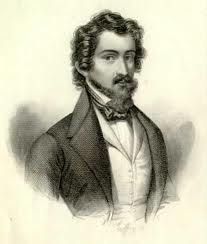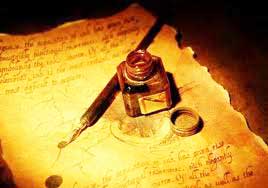Romanticism Literature
Romanticism is a movement that occurred during the first half of the 19th century and which affected all aspects of life, especially culture and art. It originated in Germany and the United Kingdom at the end of the 18th century as a revolutionary reaction to the rationalism present during the Enlightenment and Neoclassicism, and it emphasized feelings over reason. Romanticism is subjected to each individual's feelings, so there are many variations between countries, and even in the same nation.
Spanish Romanticism Literature

Romanticism developed during the first half of the 19th century, before the arrival of Realism, and it reached Spain when the rest of Europe had already moved on to new cultural movements. This is why Romanticism in Spain was such an intense movement: it was condensed in time and all the resources were already available, especially when the translated works of the great English and German writers of Romanticism reached the country.
The beginning of the 19th century was a time of high political tension as the conservatives attempted to defend their priviledges while the liberal and progressive elements tried to supplant them. Traditional Catholic thought had to defend hard against the freethinkers of the period, who often followed the philosophies of the German Karl C.F. Krause. Spain was seen as a kind of backwards, old-world kind of country in Europe, as the rest of the countries were undergoing extensive industrial development and cultural enrichment.
Romanticism made it to Spain through both the southern region of Andalusia, and the northern region of Catalonia. Andalusia was the place where Juan Nicolás Böhl de Faber, who was in fact the father of Spanish novelist Fernán Caballero, decided to publish a collection of articles between the years of 1818 and 1819, in which he defended Spanish Golden Age theatre. These works were later atacked by a variety of the neo-Classicist writers such as José Joaquín de Mora and Antonio Alcalá Galiano.
Later, in the Spanish region of Catalonia, a journal entitled "El Europeo" was published in the city of Barcelona between 1823 and 1824 by a collection of international journalists. Following the example of Böhl de Faber, the journal widely defended the traditionalist Romanticism style, and totally rejected the values of Neo-Classicism. It was it this publication that a feature of the Romantic ideology first appeared, under the title of Romanticismo.
There are two types of Romanticism:
- Traditional Romanticism: defends the restoration of traditional ideals in politics, religion and nationalism that were present during the previous century. Some authors are Walter Scott in England, Chateaubriand in France and José Zorrilla in Madrid, Spain.
- Revolutionary Romanticism: has three main aspects: search and proof of the irrational knowledge denied by reason, Hegelian dialectic and historicism. The main authors are Lord Byron in England, Victor Hugo in France and José de Espronceda in Spain.
The main characteristics of Romanticism are:

- Rejection of Neoclassicism: romanticism doesn't abide by the rules imposed during Neoclassicism. The Romantics mix different genres and verses, and don't respect the Aristotelian three-unit rule.
- Subjectivism: the feelings of the author are the most important thing in Romanticism, and they live them to the extremes. Their emotions are reflected in their works, and they can turn a landscape into a despairingly bleak scene to match their mood. Love is the most important feeling of all, and it should be lived intensely, whether good or bad.
- Attraction towards the nocturnal and the mysterious: Romantics loved anything that escaped reason, like miracles, visual hallucinations, and anything to do with witchcraft and world of spirits.
- Escape from their surroundings: Romantics reject the bourgeois world they live in, and in their works they evoke and imagine past and better days, and exotic lands. Romantics are attracted by the Middle Ages and Renaissance as times of mystery and occultism.
"Costumbrismo" was one of the most important aspects of the school of Romanticism. Its main topics were the folkloric habits, especially those of the lower classes, and they used the language in its purest form. Costumbrismo was generated as a sign of melancholy and nostalgia towards past customs and ideals, and it contributed to the decadency of Romanticism and the beginning of Realism. In Spain, the main author of the Costumbrismo is Mesonero Romanos, who was more on the sidelines of Romanticism literature.

